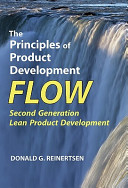

Value Stream Mapping (VSM) is a critical concept introduced in the book that emphasizes the importance of visualizing the flow of information and materials required to bring a product from conception to delivery. By mapping out the entire process, teams can identify bottlenecks, redundancies, and areas for improvement. The goal is to create a streamlined flow that maximizes value and minimizes waste. VSM encourages teams to focus on the end customer’s needs and to ensure that every step in the process adds value. This not only helps in reducing cycle times but also enhances the overall quality of the product. The book illustrates how VSM can lead to better communication among teams and foster a culture of continuous improvement.
Continue readingWIP limits are a fundamental principle discussed in the book that aims to control the amount of work that is in progress at any given time. By setting limits on WIP, teams can avoid overloading individuals and can ensure that focus is maintained on completing tasks before taking on new ones. This principle helps in improving flow and reducing lead times. The book explains that by managing WIP, teams can better identify and resolve issues as they arise, leading to a more predictable and efficient development process. This concept is particularly relevant in agile environments where rapid iterations are common, and maintaining a steady flow of work is crucial for success.
Continue readingFeedback loops are essential for learning and improvement in product development. The book emphasizes the importance of creating mechanisms that allow teams to receive timely feedback on their work, which can then be used to make informed decisions and adjustments. By establishing regular checkpoints and reviews, teams can assess their progress, gather insights from stakeholders, and refine their approach. The book illustrates how feedback loops can enhance collaboration and innovation, ultimately leading to a better product. This principle also highlights the need for a culture that values experimentation and learning from failures, which is vital for long-term success.
Continue readingCycle time reduction is a key theme in the book that focuses on minimizing the time it takes to complete a development cycle. The authors argue that shorter cycle times lead to faster delivery of products and services, allowing organizations to respond more quickly to market changes and customer needs. The book provides strategies for analyzing and optimizing processes to achieve cycle time reduction. This involves identifying non-value-added activities, improving handoff processes, and enhancing team collaboration. By prioritizing cycle time reduction, organizations can gain a competitive edge and improve their overall agility.
Continue readingThe book advocates for fostering a culture of continuous improvement within product development teams. This involves encouraging team members to regularly assess their processes, share insights, and suggest enhancements. The authors emphasize that a culture of continuous improvement is not just about making incremental changes but also about embracing innovation and being open to new ideas. The book provides examples of organizations that have successfully implemented continuous improvement practices, resulting in enhanced efficiency and product quality. By embedding continuous improvement into the organizational culture, teams can remain adaptable and resilient in the face of challenges.
Continue readingA holistic approach to product development is a central idea in the book, suggesting that teams should consider all aspects of the development process, including design, engineering, marketing, and customer support. The authors argue that siloed thinking can lead to inefficiencies and misalignment between teams. By adopting a holistic perspective, organizations can ensure that all functions work collaboratively towards a common goal. The book illustrates how cross-functional teams can enhance communication, reduce delays, and improve product outcomes. This approach also encourages shared ownership of the product and fosters a sense of accountability among team members.
Continue readingEmpowerment and trust are crucial elements discussed in the book that focus on enabling team members to take ownership of their work. The authors argue that when individuals feel empowered, they are more likely to contribute creatively and take initiative in problem-solving. Trust among team members is essential for fostering collaboration and open communication. The book provides insights into how leaders can cultivate an environment of trust by promoting transparency, encouraging risk-taking, and recognizing contributions. By empowering teams and building trust, organizations can enhance motivation, innovation, and overall performance.
Continue reading